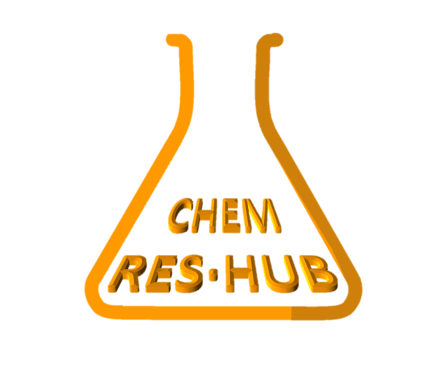How to Write a Research Proposal: A Step-by-Step Guide for Beginners
BLOGCHEMISTRYTUTORIAL


A research proposal is a crucial document that outlines your research plan before you begin. Whether you're applying for a research grant, CSIR-SRF, a Ph.D. program, or a university project, a well-structured proposal increases your chances of approval.
How to Write a Research Proposal: A Step-by-Step Guide for Beginners
Introduction
A research proposal is a crucial document that outlines your research plan before you begin. Whether you're applying for a research grant, a Ph.D. program, or a university project, a well-structured proposal increases your chances of approval.
This guide will take you through the key steps of writing an effective research proposal, from selecting a topic to crafting a compelling argument for your study.
1. Understanding the Purpose of a Research Proposal
Before writing, you need to understand what a research proposal aims to achieve:
✅ Justifies your research – Explains why your study is important.
✅ Shows feasibility – Demonstrates that your research is practical and achievable.
✅ Defines methodology – Details the approach you will use.
✅ Attracts funding – Helps secure grants or approval from institutions.
2. Choosing a Research Topic
Your topic should be specific, relevant, and researchable.
A. How to Choose a Strong Research Topic
Identify a research gap – Look for unresolved questions in the literature.
Ensure feasibility – Make sure you have access to necessary resources.
Align with your expertise – Choose a topic in your area of study.
B. Example of Topic Selection
✅ Too Broad: "Nanomaterials in Medicine"
✅ Better: "Application of Metal-Organic Frameworks (MOFs) for Targeted Drug Delivery in Cancer Treatment"
3. Structuring Your Research Proposal
Most research proposals follow a structured format:
A. Title Page
Clear and concise research title.
Your name, department, and institutional affiliation.
Date of submission.
B. Abstract (Optional but Recommended)
A short summary (150-250 words) of the research problem, objectives, methodology, and significance.
C. Introduction
Key elements to include:
✅ Background: Provide context for your research.
✅ Problem Statement: Clearly define the issue your research addresses.
✅ Research Gap: Explain why existing studies are insufficient.
✅ Research Questions: Specify the key questions your study will answer.
✅ Example of a Problem Statement:
"Despite the potential of MOFs in drug delivery, their stability in biological environments remains a challenge. This study explores methods to enhance MOF stability for targeted cancer treatment."
D. Literature Review
A strong literature review demonstrates your understanding of previous research.
✅ What to Include:
Summary of key studies related to your topic.
Critical analysis – Compare different viewpoints.
Identify gaps – Show where research is lacking.
✅ Sources to Use:
Google Scholar
PubMed (for medical research)
Scopus / Web of Science
University Repositories
E. Research Objectives
State what your study aims to achieve in a clear and specific manner.
✅ Example of Research Objectives:
To analyze the adsorption efficiency of MOFs in ibuprofen drug release.
To evaluate the effect of pH on drug adsorption and desorption rates.
To optimize MOF structures for better drug delivery performance.
F. Research Methodology
This section explains how you will conduct your research.
✅ Key Elements to Include:
Research Design: Experimental, survey, case study, etc.
Data Collection Methods: Laboratory experiments, simulations, interviews, etc.
Materials and Equipment: If applicable, list the chemicals, instruments, and software you will use.
Data Analysis Methods: Statistical tools (e.g., SPSS, MATLAB, Python), qualitative analysis, etc.
✅ Example of a Methodology Statement:
"This study will synthesize HKUST-1 MOFs via solvothermal methods and analyze their adsorption capacity using UV-Vis spectrophotometry. Drug release kinetics will be assessed under varying pH conditions."
G. Expected Results & Significance
What outcomes do you anticipate?
✅ Example:
Improved stability of MOFs in physiological conditions.
Increased drug release efficiency under controlled conditions.
Why is this study important?
Advances targeted drug delivery research.
Provides insights into MOF design for pharmaceuticals.
H. Research Timeline
Provide a work plan with estimated timeframes for each research stage.
I. Budget (If Applicable)
If applying for research funding, include a budget estimate for:
✅ Lab equipment (non-recurring)
✅ Recurring costs (for stationary, reagents or fieldwork)
✅ Contingency expenses
✅ Travel (for conferences or fieldwork)
✅ Overhead (for institute expenditures)
J. References
Cite all sources using a standardized format (APA, MLA, or Chicago).
4. Common Mistakes to Avoid in Research Proposals
🚫 Unclear research questions – Be specific.
🚫 Lack of supporting literature – Justify your study with existing research.
🚫 Overly ambitious scope – Keep your study realistic and achievable.
🚫 Ignoring formatting guidelines – Follow your institution’s template.
5. Submitting Your Research Proposal
Once your proposal is complete:
✅ Proofread for clarity and grammar.
✅ Get feedback from mentors or colleagues.
✅ Ensure all references are correctly formatted.
✅ Submit it before the deadline.
Final Thoughts
Writing a research proposal requires careful planning and clear writing. By choosing a strong topic, conducting a thorough literature review, and presenting a well-structured methodology, you can increase your chances of approval.
Whether you’re applying for a grant, a research program, or a Ph.D., mastering proposal writing is a crucial skill that will help you throughout your academic career.
📢 What challenges do you face while writing research proposals? Share your thoughts in the comments!
Happy Researching!!
